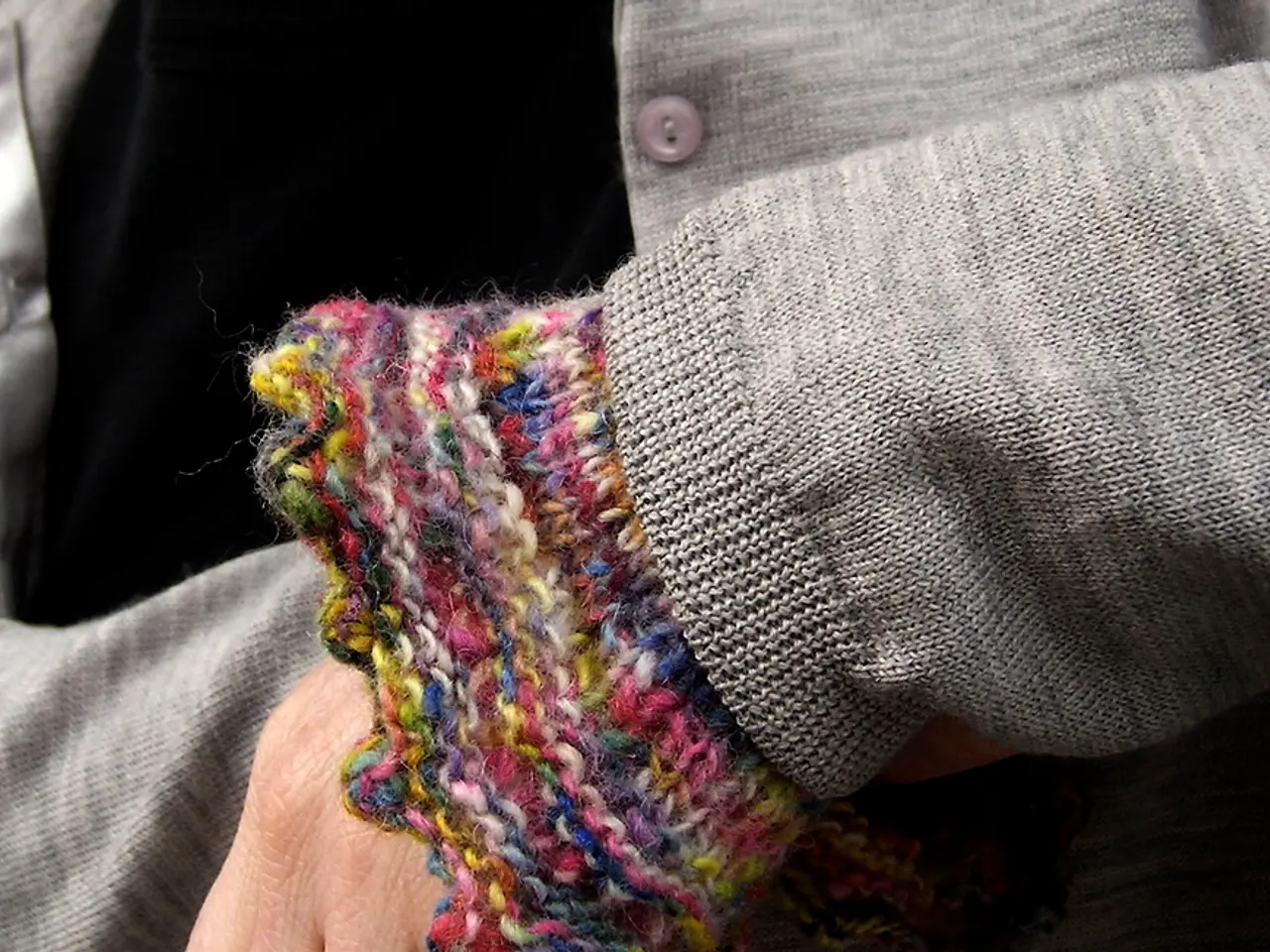Intense Facial and Cranial Perspiration: Triggers and Further Insights
In a significant number of people across the United States, the condition known as hyperhidrosis affects their daily lives. Approximately 3% of the population experiences this condition, which is characterized by excessive sweating [1].
Hyperhidrosis of the head and face can be primary or secondary, with secondary hyperhidrosis being caused by a medical condition or medication [2]. For those dealing with craniofacial hyperhidrosis, various treatment options are available, ranging from oral medications to surgical procedures.
First-line treatments for craniofacial hyperhidrosis typically involve oral medications such as glycopyrrolate or clonidine, which reduce sweating by blocking nerve signals [3][5]. Second-line options include topical antiperspirants containing aluminum chloride, though these must be used cautiously on the face due to sensitivity [3][5].
Botulinum toxin injections, such as Botox, are a third-line treatment that has demonstrated substantial efficacy. These injections can reduce facial sweating by 82-87%, with patients noticing effects within 2 to 4 days and peak effect by 2 weeks [1][4]. The relief typically lasts from 4 to 14 months, often around 6 months, after which repeat treatments are needed. Botox treatment significantly improves patients’ quality of life by reducing sweat patches and associated social and psychological discomfort [1][4].
Alternatives to Botox include other botulinum toxin formulations such as Dysport, Xeomin, and the newer Daxxify, which offer varying durations of effect and may be used off-label for craniofacial hyperhidrosis [2][4]. Daxxify, for instance, may provide longer-lasting results beyond six months [2][4].
While these treatments provide relief, it's essential to remember that they are not one-size-fits-all solutions. A doctor will review each individual's case and recommend the most suitable treatment based on factors such as the severity of the condition, the patient's overall health, and their personal preferences.
In some cases, more invasive treatments may be necessary. Endoscopic thoracic sympathectomy is a surgical treatment for hyperhidrosis that involves cutting or clipping nerves responsible for triggering sweating in the affected area [6]. This procedure carries the risk of compensatory sweating in other areas [6].
A newer approach to destroying sweat glands involves using microwave energy to create heat in the skin, destroying sweat glands without making incisions [7]. However, this method is still under investigation and may not be widely available yet.
For those experiencing excessive or unexplained sweating, particularly if it develops suddenly or after starting a medication, it's crucial to consult a doctor [8]. Common triggers for hyperhidrosis include warm weather, alcohol, spicy foods, anxiety, tight clothing, exercise, caffeine, and monosodium glutamate (MSG) [9].
In conclusion, treatment for craniofacial hyperhidrosis starts with oral agents, progresses to cautious topical use, and commonly utilizes botulinum toxin injections. Repeat treatments are necessary to maintain symptom control [1][3][4][5]. It's essential to work closely with a healthcare professional to determine the best course of action for managing this condition.
- Science has uncovered a link between certain health conditions, like HIV, depression, and atopic dermatitis, and an increased risk of developing hyperhidrosis.
- In the realm of health-and-wellness, hyperhidrosis can significantly impact a person's mental-health and emotional well-being due to the social and psychological discomfort it causes.
- Skin-care is another aspect that can be affected by hyperhidrosis, as it might lead to conditions like psoriasis or dermatitis due to excessive sweating.
- Therapies and treatments for asthma, such as inhalers, can sometimes indirectly contribute to hyperhidrosis by increasing the body's overall moisture production.
- The predictive nature of science allows us to anticipate and manage potential complications, such as compensatory sweating in areas other than the face, following more invasive treatments for hyperhidrosis.
- In the realms of both skin-care and mental-health, managing hyperhidrosis can lead to improved quality of life and increased self-confidence.
- When it comes to tiers of treatment for craniofacial hyperhidrosis, newer treatments like microwave energy, though still under investigation, offer the potential for long-lasting relief without the need for incisions.




